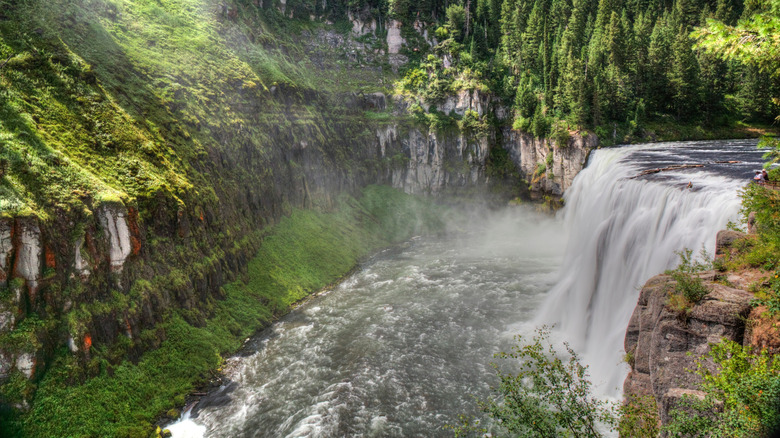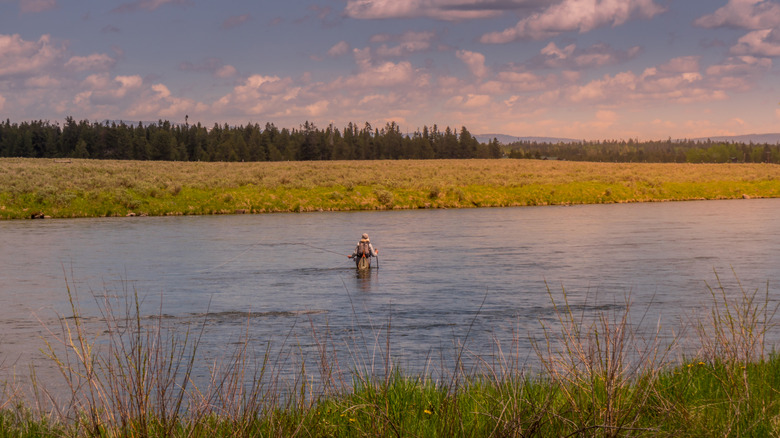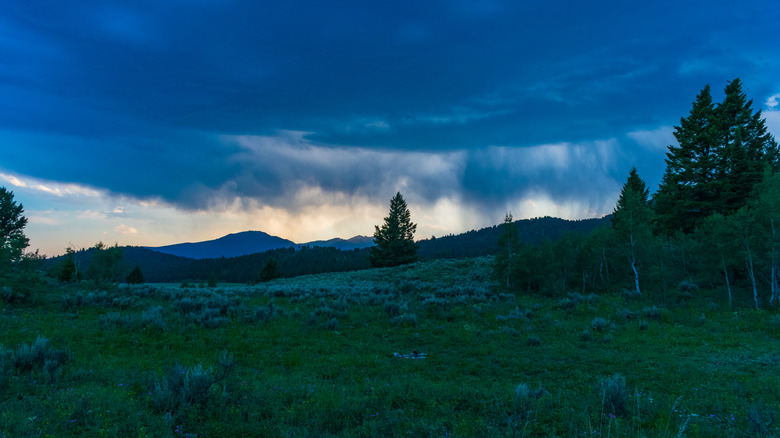A National Forest In Idaho Is A Camping And Fishing Paradise Within A Day's Drive Of Yellowstone
One national forest spans most of eastern Idaho, includes more than 3 million acres of public lands, and offers some of the best camping and fishing in the West. And the best part? It's all part of the Greater Yellowstone Ecosystem, situated on the doorsteps of both Grand Teton and Yellowstone national parks. The Caribou-Targhee National Forest includes everything from trophy trout streams, like the Henry's Fork and the South Fork of the Snake River, to high-elevation lakes bursting with wild native trout that are accessible only on foot, via off-road vehicle, or on the back of a horse. This vast national forest offers visitors the chance to take in all of the wildlife they might otherwise find in nearby national parks, but without the painstaking national park traffic, pricey entrance fees, or throngs of tourists crowding trails and boardwalks.
The Caribou-Targhee National Forest is not a substitute for visiting Yellowstone National Park, where visitors will find a vibrant geyser basin with a unique ecological environment. But it does offer a more subtle experience, where campsites aren't so hard to come by, and the crowds are drastically diminished. What's more, it offers anglers the opportunity to take in some incredible trout waters, both in the form of its storied rivers, and in its quiet mountain streams and hidden lakes that burst with fishy possibilities. It boasts dozens of formal campgrounds where visitors can pitch tents or park their RVs, and it offers some wonderful dispersed camping for folks who want to experience something more primitive while enjoying the woods and waters of this gorgeous national forest. For travelers visiting the area from afar, the Caribou-Targhee National Forest's southern reaches are just two and a half hours from Salt Lake City and its international airport by car.
Idaho's Caribou-Targhee is a trophy trout fishing paradise
Anglers, particularly fly fishers, will find ample opportunity in the rivers, lakes, and streams of the Caribou-Targhee. From Henry's Lake in the north near the border with Montana, to the Bear River drainage in the south near the Utah border with Idaho, the forest is home to more trout water than most anglers could explore in a lifetime. It's tough to beat the storied waters of the Henry's Fork and the South Fork, two high-profile trout rivers that are home to opportunities to catch the trophy fish of a lifetime. Throw in stellar backcountry options, like upper Palisades Lake, and the streams that flow from the western shoulders of the Tetons and the Jedediah Smith Wilderness Area, and Caribou-Targhee National Forest is decidedly fishy.
One of America's top fly-fishing destinations — Swan Valley, on the South Fork of the Snake River below Palisades Reservoir — bisects the forest and offers some incredible angling for big cutthroat trout, rainbow trout, brown trout, and native mountain whitefish. The river is a dry-fly paradise, and anglers visiting it can stay at gorgeous, high-end fishing lodges like the South Fork Lodge, or even rent a drift boat and navigate the fish-filled river on their own. To the north, running across the Island Park Caldera and eventually off the plateau and onto the Snake River Plain, is the fabled Henry's Fork, long a bucket-list fly-fishing destination for anglers who want to test their mettle against the river's sophisticated brown trout and rainbow trout. The Henry's Fork is also among the most scenic rivers in the West. It's home to upper and lower Mesa Falls, a stunning cascade that rivals any waterfall in the West, except for maybe Yellowstone Falls, about a two-hour drive east in Yellowstone National Park.
The Caribou-Targhee offers excellent camping on Yellowstone's doorstep
The northern reaches of the Caribou-Targhee National Forest border both Grand Teton and Yellowstone National Parks, making for great camping opportunities for visitors who don't want to shoulder their way into cramped campgrounds in either national park. In Island Park, the most underrated gateway to Yellowstone, just west of the boundary with Yellowstone National Park, visitors can pitch tents or park RVs at several national forest campgrounds, including Box Canyon, Riverside, Buffalo, and Flat Rock. Campers should always reserve a spot well in advance of their scheduled arrival by visiting recreation.gov. It's very difficult to find a vacant campsite in a designated campground in Island Park, simply because the area is just a short drive from Yellowstone National Park.
Throughout the forest, there are literally hundreds of miles of Forest Service roads to explore, and many are suited to passenger vehicles. On others, high-clearance vehicles are best, but along most Forest Service roads, dispersed camping is available on a first come, first served basis. In most dispersed camping locations, both tents and RVs can be accommodated, but RVs must be totally self-contained and campers must not dump their gray or black water anywhere but in a designated RV dump. Campers are only allowed to camp in one spot for 14 days out of any 28-day period. This rule gives others a chance to enjoy some of the many stunning campsites in the forest. The best part is that there are no campground fees at dispersed campsites. It's totally free, which is sure to put a smile on any visitor heading off on a signature western vacation. The Caribou-Targhee National Forest especially makes for a great home base for a Yellowstone or Grand Teton adventure.


